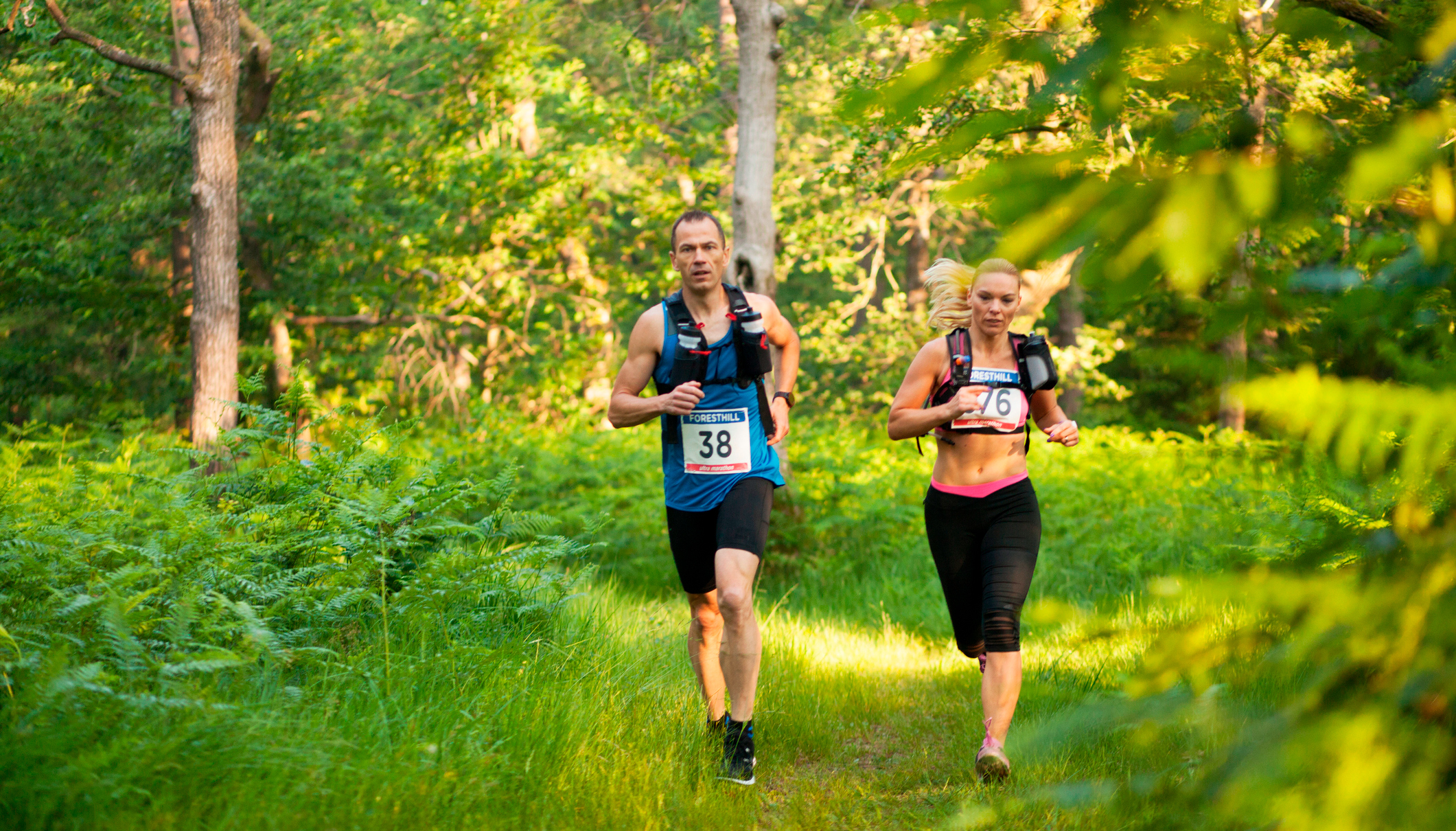
Training for a running event of any length is challenging and it’s not true that the longer the event the harder it is. That was one of the first things I noticed about training for my first ultra-marathon last year: I found it less intense than marathon training. A lot of that is down to expectations, though. I’m usually aiming to run a PR when marathon training and do a couple of hard workouts each week, whereas with my first ultra-marathon I was just aiming to finish and enjoy the process as much as possible.
The event I completed was a local one, in Epping Forest, London, where I ran 10 five-mile laps in just over eight hours. Things got pretty dark towards the end of the event, literally and figuratively, though overall I enjoyed the experience. If you’re tackling your first ultra-marathon this year, here are a few things I picked up that are worth knowing.
1. You Have To Walk And Take Breaks While Feeling Good
The biggest lesson I learned and the hardest for me to take in. I’m used to running races all-out, so the idea of taking a walking break from the relatively slow paces you run at during an ultra-marathon seemed odd.
However, during my main training run—a 50K around the Gower in Wales—and the 50-mile ultra-marathon I should have taken more walk breaks on the uphills in the first half, and longer breaks to refuel, even though I was feeling fresh. I hit the wall hard in the ultra-marathon, having to walk a lot of the last 20 miles, and a more conservative first 30 miles would have helped avoid or reduce the impact of that.
2. When You Hit The Wall In An Ultra-Marathon There Can Be A Long Way To Go
I’m no stranger to hitting the wall in a marathon, but when that happens I usually only have a few miles to go to the finish, and a mix of running and walking will get me home without spending too much more time on my feet. In the ultra-marathon I had to start a mix of walking or jogging with 15 miles to go, which took three hours. Hopefully, better pacing can help you avoid this, but it’s worth mentally preparing yourself for a long slog in the second half of the event, even if you are still running OK.
3. Keep On Fuelling. No Matter How Hard It Is
Fuelling consistently is vital to success in ultra-marathons, but it’s hard to keep eating and drinking when you’re feeling rough after a few hours of running and your stomach is churning. I pretty much gave up on eating after 35 miles of my ultra, which was not smart when I had three more hours of activity to fuel. I learned that I couldn’t be trusted to make smart decisions after that much running, so having a more regimented nutrition plan in place before I started would probably have helped me force down food at appropriate intervals.
4. I Enjoyed Eating A Variety Of Food On The Run
When I run marathons, or shorter events, my fueling is entirely made up of sports drinks and gels that I can consume while running fast, but with ultra-marathons you have time to stop and chew, and usually have aid stations where you can stash bigger items. I enjoyed eating crisps and fresh fruit, and drinking flat cola, and also used energy chews and bars—saving me from gels, which are not the most appetizing thing to have for several hours in a row.
5. Time On Feet Was My Main Training Target
When marathon training I’ll do a lot of speed sessions and work to hit certain paces, but with ultra-marathon training I was just trying to get used to spending a lot of time on my feet. I did a 50K in five hours training, and slowed down a lot on my Sunday long runs to run at the pace I would start at on race day.
6. Uphills Take Much Longer Than You Think
I didn’t do a particularly hilly ultra-marathon—there was about 3,300ft of climbing over the 50 miles—but even then the hills became the biggest factor in the second half of the race. This was also true on my long run in Wales, which was hillier and had big climbs in the final few miles.
It’s hard to believe how long climbs take when you’re struggling, and it’s dispiriting to think that even if you only have a few miles to go if they’re hard uphills you can still be out there for hours. Check your ultra-marathon course for hills and practice accordingly, and if there are a lot of downhills practice those too because your quads will have to deal with that.
7. Practice With All Your Gear Multiple Times
This is something you should do with any long race, but in an ultra-marathon any minor problem with your shoes or kit will be amplified because you’ll have to endure any rubbing, or annoying flapping, or whatever the issue is, for several hours. My problem was a water bottle with a leaky valve that kept getting sticky sports drink on my hands and chest. A minor problem, for sure, but something I didn’t enjoy dealing with for eight hours. You might not do an ultra-marathon in training, but ensure you get out in all your kit for a couple of hours a few times, just to minimize issues on race day.







